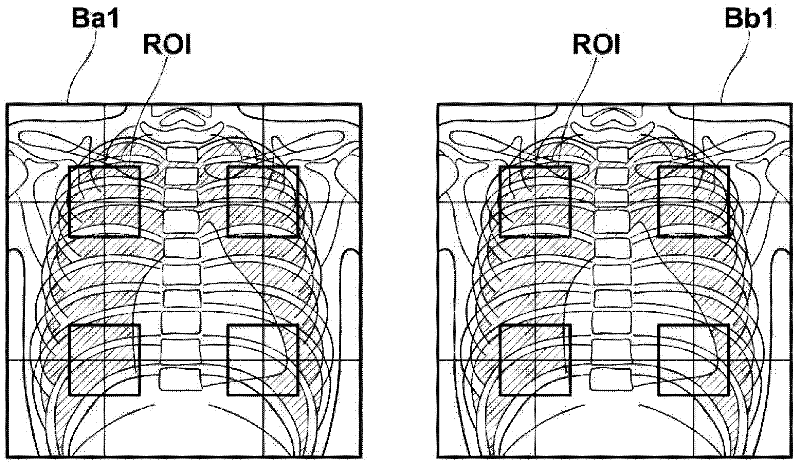Method, apparatus, and program for aligning images
A technology for aligning devices and images, which is applied in image enhancement, image analysis, image data processing, etc., can solve the problems of artifacts in subtraction images, and achieve high-accuracy results
- Summary
- Abstract
- Description
- Claims
- Application Information
AI Technical Summary
Problems solved by technology
Method used
Image
Examples
Embodiment Construction
[0061] Hereinafter, embodiments of the present invention are described with reference to the drawings. figure 1 is a block diagram showing a schematic configuration of the image position alignment device 1 according to the first embodiment of the present invention. Notice, figure 1 The image position alignment device 1 in is applied to an energy subtraction device that performs subtraction processing using radiographic image pairs. For example, the energy subtraction device is installed on an imaging console that uses a radiation detector to acquire radiographic images. By executing an image alignment processing program downloaded to an auxiliary storage device on a computer (such as a personal computer), such as figure 1 The structure of the image position alignment device 1 is shown. At this time, the image alignment processing program is installed in a computer after being recorded on a data recording medium such as a CD-ROM or distributed via a network such as the Inter...
PUM
 Login to View More
Login to View More Abstract
Description
Claims
Application Information
 Login to View More
Login to View More - R&D
- Intellectual Property
- Life Sciences
- Materials
- Tech Scout
- Unparalleled Data Quality
- Higher Quality Content
- 60% Fewer Hallucinations
Browse by: Latest US Patents, China's latest patents, Technical Efficacy Thesaurus, Application Domain, Technology Topic, Popular Technical Reports.
© 2025 PatSnap. All rights reserved.Legal|Privacy policy|Modern Slavery Act Transparency Statement|Sitemap|About US| Contact US: help@patsnap.com



